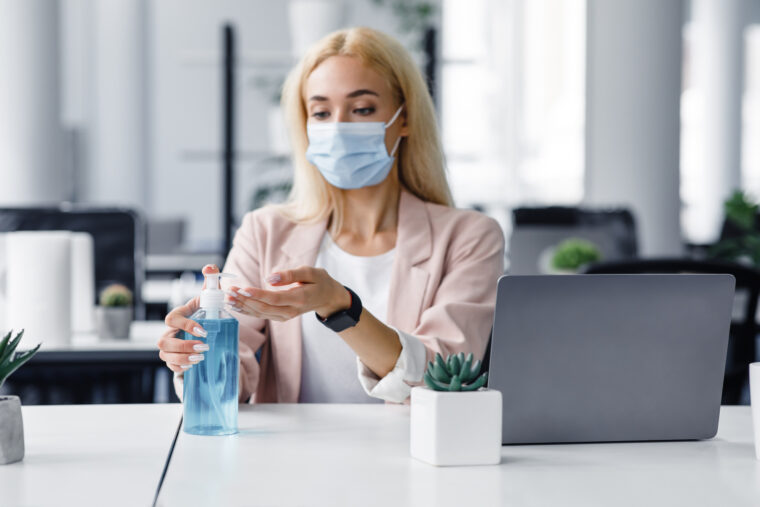Preventing The Spread Of Germs: Best Practices For Workplace Hygiene

Maintaining a clean and healthy work environment is crucial for preventing the spread of germs and ensuring the well-being of team members. With the ongoing concern about infectious diseases, it’s essential for organizations to implement effective workplace hygiene practices.
By following the guidelines outlined in this article, employers can promote a safer and healthier workspace for their team members, minimizing the risk of illness and absenteeism. Additionally, incorporating professional sanitizing services can provide additional protection to keep the workplace clean and germ-free.
- Hand Hygiene And Personal Care
Maintaining a hygienic workplace requires a multifaceted approach that promotes hand hygiene and personal care among team members. Regular hand hygiene is essential in preventing the spread of germs. It’s ideal to encourage team members to wash their hands thoroughly with soap and water for at least 20 seconds, emphasizing key times such as before and after eating, using the restroom, and after coughing or sneezing.
Visual reminders and instructional signs near sinks and restrooms can prompt proper handwashing. You may also provide alcohol-based hand sanitizers in strategic locations throughout the workplace. This further supports hand hygiene when soap and water are not readily available.
Alongside hand hygiene, fostering personal hygiene practices such as regular showers, wearing clean clothes, and maintaining trimmed nails contribute to overall cleanliness. It’s vital to emphasize the importance of avoiding face-touching, as this prevents the transfer of germs from contaminated surfaces.
By integrating these practices and maintaining your personal health, employers may create a workplace environment that prioritizes hygiene and safeguards team members’ well-being.
- Respiratory Etiquette
The spread of respiratory infections can occur effortlessly through the air when an infected individual coughs or sneezes. It’s important to promote respiratory etiquette among team members, advising them to cover their mouth and nose with a tissue or elbow whenever they cough or sneeze. Proper disposal of used tissues should be done promptly, followed by thorough handwashing.
It’s advisable to utilize face masks to help protect against influenza, airborne particles, and highly contagious diseases. Display posters in common areas to raise awareness about the importance of respiratory etiquette and maintaining a hygienic environment.
- Clean Workstations
Workstations can harbor many germs, considering the time team members spend at their desks. Regular cleaning and disinfection of work surfaces, keyboards, mice, and telephones are vital to prevent the transmission of germs.
Team members should be encouraged to clean their workstations regularly using disinfectant wipes or sprays. Additionally, it’s best to provide a designated area where team members can store personal items, such as bags and coats, to avoid cross-contamination.
The use of plastic covers in workplaces may also serve as an effective barrier to prevent the spread of germs and maintain a clean environment. Plastic covers can be employed to protect frequently touched surfaces. By covering these surfaces with plastic, it becomes easier to clean and disinfect them regularly, reducing the risk of contamination.
Moreover, plastic covers can act as a visual reminder for team members to exercise caution and practice good hygiene by minimizing direct contact with shared surfaces. Implementing plastic covers as part of workplace hygiene measures demonstrates a proactive approach to safeguarding the health and well-being of team members and promoting a hygienic work environment.
- Regular Cleaning And Disinfection
Routine cleaning and disinfection of common areas, such as meeting rooms, break rooms, and restrooms, are crucial for maintaining a hygienic workplace. Regularly sanitize high-touch surfaces, including doorknobs, light switches, elevator buttons, and handrails.
Hiring professional sanitizing services is best to ensure thorough and effective cleaning. These services use specialized techniques and disinfectants to eliminate germs and provide a safer environment for team members.
- Promote Vaccination
Encourage team members to receive recommended vaccinations, such as the annual flu shot. Vaccinations can significantly reduce the spread of infectious diseases in the workplace, protecting both team members and their families. You may consider hosting on-site vaccination clinics or providing information about nearby vaccination centers to make it more convenient for team members to get vaccinated.
- Education And Awareness
Regularly educate team members about the importance of workplace hygiene and provide updates on best practices for preventing the spread of germs. Share information about common illnesses, symptoms, and preventive measures through email newsletters, posters, or intranet platforms. Encouraging open communication and creating a culture of hygiene awareness will empower team members to take responsibility for their health and the well-being of their colleagues.
Conclusion
Maintaining a clean and hygienic workplace is essential for preventing the spread of germs and ensuring the health and well-being of team members. Considering professional sanitizing services can supply a secondary layer of protection to minimize the risk of infectious diseases. Prioritize your workplace hygiene and make it a collective effort to safeguard the health of everyone in the workplace.

